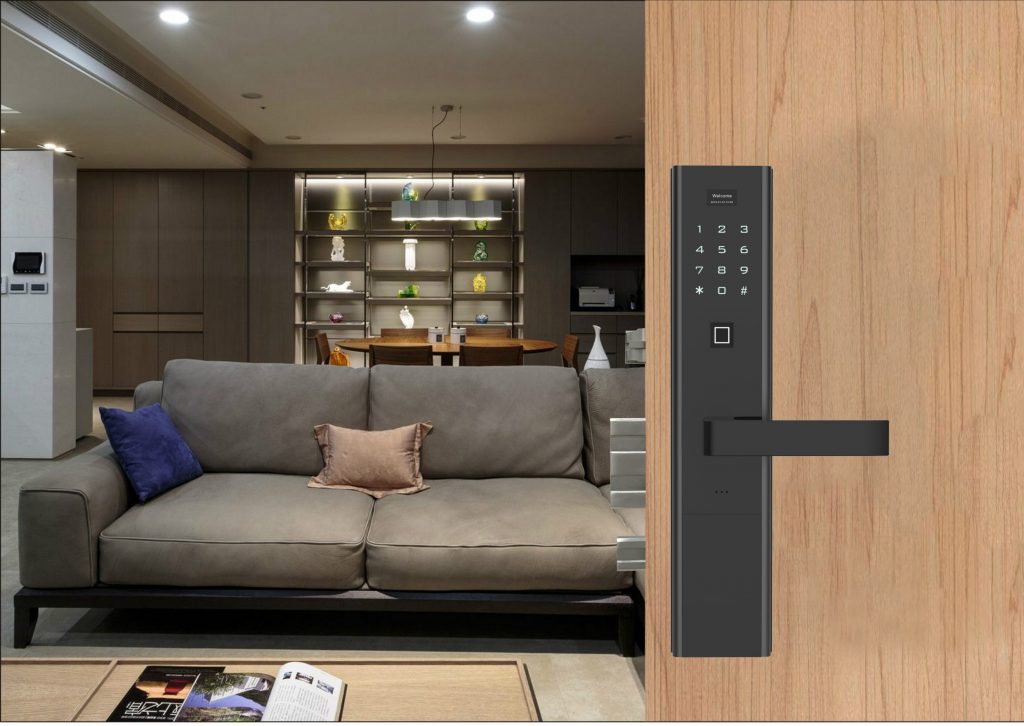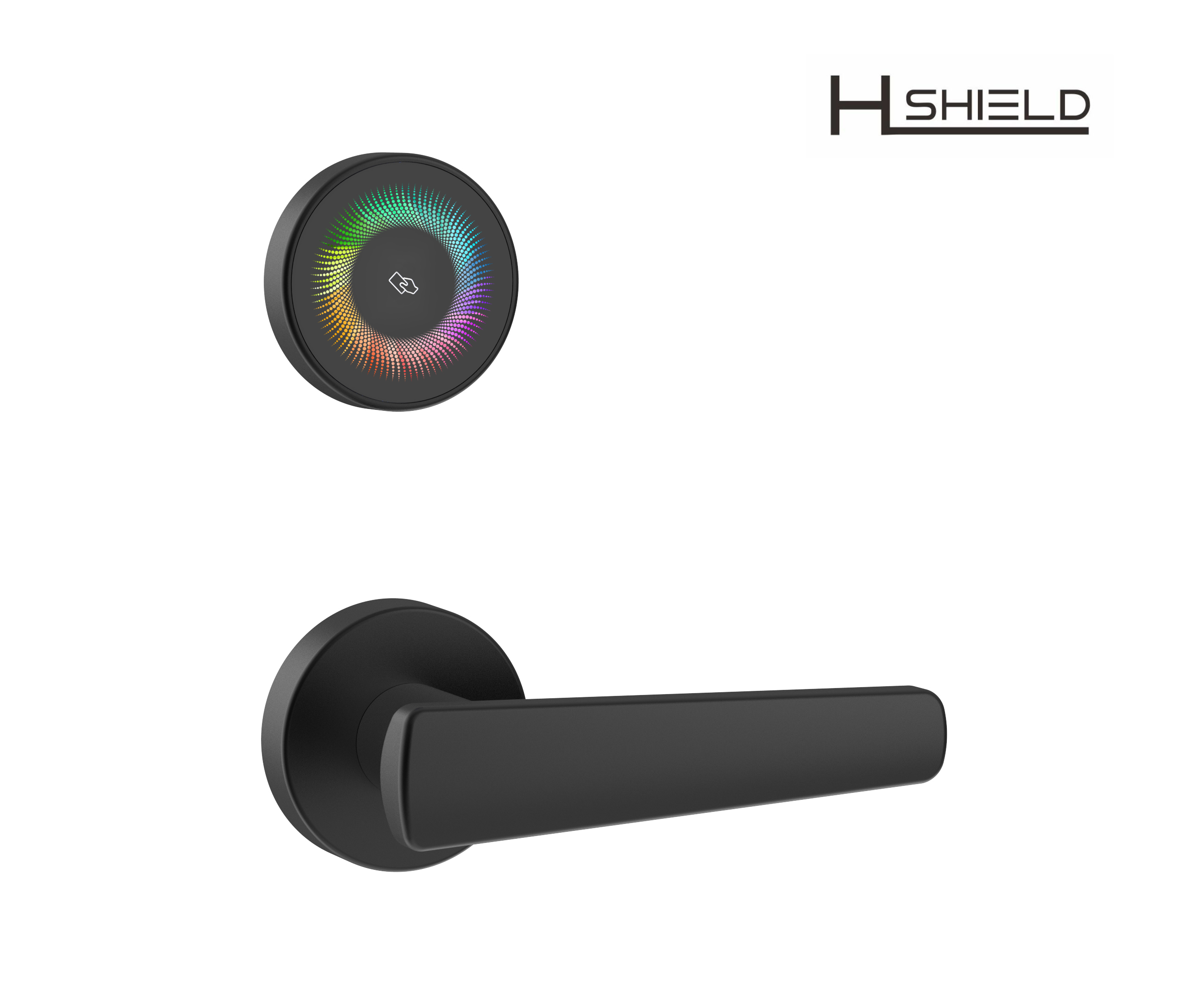When securing your home or office, choosing the right lock is crucial. A fingerprint door lock is a modern, high-tech solution that offers both convenience and advanced security features. Unlike traditional locks that rely on keys or codes, fingerprint door locks use biometric technology to grant access, making them highly secure and user-friendly.
These locks are designed to recognize the unique patterns of your fingerprint, providing a level of security that is difficult to breach. This article will explore what makes a fingerprint door lock an excellent choice for your security needs, highlighting its benefits, features, and advantages over conventional locking systems.
Whether you are looking to enhance the security of your home or office, a Fingerprint door lock could be the ideal solution.
What is a Fingerprint Door Lock and How Does It Work?
A fingerprint door lock is an advanced security system that uses biometric technology to grant access. This type of lock allows users to unlock a door by scanning their fingerprints, providing a highly secure and convenient alternative to traditional keys or codes.
How It Works:
- Fingerprint Scanning: The core feature of a Fingerprint door lock is its fingerprint scanner, which captures the unique patterns of a person’s fingerprint. When you place your thumb or finger on the scanner, it generates a digital image of your fingerprint.
- Image Processing: The digital image of the fingerprint is processed by the lock’s onboard computer system. It extracts key features and patterns from the fingerprint and compares them to the stored data.
- Authentication: The lock checks the processed fingerprint against a database of authorized fingerprints stored in its memory. If the scanned fingerprint matches one of the authorized prints, the lock’s internal mechanism is activated.
- Unlocking Mechanism: Once authentication is successful, the lock disengages the bolt or latch, allowing the door to open. If the fingerprint does not match, the lock remains secure and will not open.
- Additional Features: Many fingerprint door locks also come with additional features such as keypads for backup access, remote control options, or integration with smart home systems. These features enhance the lock’s versatility and usability.
What Are the Key Benefits of Using a Fingerprint Door Lock?
Fingerprint door locks for sale offer several key benefits that enhance both security and convenience. Here are some of the primary advantages:
- Enhanced Security: Fingerprint door locks use biometric technology to verify the unique patterns of an individual’s fingerprint. This method is highly secure because fingerprints are unique to each person, making unauthorized access significantly more difficult compared to traditional key-based locks.
- Elimination of Keys: With a Fingerprint door lock, there’s no need for physical keys, which can be lost, stolen, or duplicated. This eliminates the risk of key-related security breaches and the hassle of managing multiple keys.
- Convenience: Accessing your home or office is quick and easy with a fingerprint door lock. Simply place your thumb or finger on the scanner, and the lock will grant access in seconds. This can be especially convenient when your hands are full or when you are in a hurry.
- Customizable Access: Many fingerprint door locks allow you to store multiple fingerprints, enabling you to grant access to family members, employees, or other trusted individuals. This makes it easy to manage access without the need for physical keys or codes.
- Audit Trail: Some advanced fingerprint door locks come with an audit trail feature that logs entry attempts and provides a record of who accessed the door and when. This can be useful for monitoring security and tracking access in both residential and commercial settings.
- Durability: Fingerprint door locks are often designed with robust materials and construction, making them resistant to wear and tear. Their electronic components are typically well-protected, contributing to the lock’s long-term reliability.
- Integration with Smart Home Systems: Many fingerprint door locks can be integrated with smart home systems, allowing for remote control and monitoring. This adds an extra layer of convenience and flexibility, enabling you to manage access from anywhere.
- Reduced Risk of Lockouts: Since fingerprint door locks do not rely on physical keys, the risk of being locked out due to lost or forgotten keys is minimized. As long as the authorized user’s fingerprint is registered, access is always available.
- Modern Aesthetic: Fingerprint door locks often feature sleek, modern designs that complement contemporary home or office decor. Their advanced technology adds a sophisticated touch to any entryway.
No doubt, fingerprint door locks offer a combination of advanced security, convenience, and modern features that make them an excellent choice for both residential and commercial applications.
How Secure is a Fingerprint Door Lock Compared to Traditional Locks?
Fingerprint door locks offer a higher level of security compared to traditional locks due to their advanced biometric technology. Unlike traditional locks, which rely on physical keys or combinations that can be lost, stolen, or duplicated, fingerprint door locks use unique fingerprint patterns for authentication.
Each individual’s fingerprint is distinct, making it virtually impossible for unauthorized persons to gain access without a registered fingerprint. Additionally, many fingerprint door locks include encryption and advanced algorithms that further enhance their security against tampering and hacking.
This biometric approach not only reduces the risk of unauthorized entry but also eliminates the need for physical keys, which can be a security vulnerability if misplaced. In summary, the sophisticated technology behind fingerprint door locks provides a more secure and reliable method of protecting your property compared to traditional locking mechanisms.
What Features Should You Look for in a Fingerprint Door Lock?
When selecting a fingerprint door lock, several key features should be considered to ensure you choose a model that meets your security needs and preferences. First, look for a lock with a high-quality fingerprint scanner that provides fast and accurate recognition. The scanner should be able to handle various fingerprint conditions and offer a reliable authentication process.
Additionally, ensure the lock has a robust and durable construction, with materials that can withstand environmental factors and frequent use. Consider models with backup access options, such as keypads or traditional keys, in case of technical issues. It’s also beneficial to choose a lock with customizable access, allowing you to register multiple fingerprints for different users. Some advanced models come with an audit trail feature, which logs access attempts and can be useful for monitoring security.
Furthermore, integration with smart home systems can add convenience by enabling remote control and monitoring. Finally, evaluate the ease of installation and maintenance, opting for a lock that offers a user-friendly setup and minimal upkeep.
By focusing on these features, you can ensure a good fingerprint door lock that provides enhanced security, convenience, and durability.
How Easy Is it to Install a Fingerprint Door Lock?
Installing a fingerprint door lock is generally straightforward, especially with models designed for ease of installation. Most fingerprint door locks have detailed instructions and require only basic tools, making them suitable for DIY projects.
Installation Process:
- Preparation: If applicable, remove the existing lock from the door. Ensure the door is compatible with the fingerprint lock, checking that it fits standard door sizes and thicknesses.
- Mounting the Lock: Position the new fingerprint door lock’s exterior and interior components according to the manufacturer’s instructions. The lock typically fits into the existing latch and bolt holes, making it easy to align and install.
- Wiring: For models that require wiring, follow the provided instructions to connect the necessary cables between the interior and exterior parts of the lock. Most fingerprint locks have user-friendly connectors and color-coded wires for easy installation.
- Programming: Once installed, you will need to program the lock. This involves registering fingerprints, setting user codes (if applicable), and configuring any additional features like audit trails or smart home integration. The setup process is usually guided by on-screen prompts or a user manual.
- Testing: After installation and programming, test the lock to ensure it functions correctly. Verify that the fingerprint scanner recognizes registered prints accurately and that the lock engages and disengages smoothly.
Fingerprint door locks are designed to be user-friendly, with clear instructions and minimal installation complexity. For those who prefer professional assistance, many locksmiths and security specialists offer installation services.
Conclusion:
In conclusion, a Fingerprint door lock offers a cutting-edge solution for securing your property with unparalleled convenience and security. By utilizing biometric technology, these locks provide an advanced level of protection that is difficult to breach compared to traditional locks. They eliminate the need for physical keys, reduce the risk of unauthorized access, and offer a range of features to enhance functionality and convenience.
With user-friendly installation and the added benefit of modern, smart home integration, fingerprint door locks represent a significant upgrade to conventional locking systems. For those interested in enhancing their security with the latest in access technology, contact Home Shield today to get a quote and discover how a fingerprint door lock can meet your security needs.













